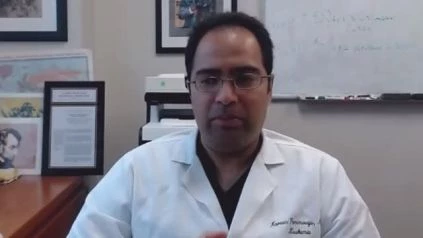Naveen Pemmaraju, MD of MD Anderson speaks about Blastic Plasmacytoid Dendritic Cell Neoplasm.
Context
Natural killer (NK) cell leukemia/lymphoma was historically identified as blastic plasmacytoid dendritic cell neoplasm (BPDCN). The World Health Organization (WHO) developed the term blastic plasmacytoid dendritic cell neoplasm (BPDCN) in 2008 as an understanding of the biology and origin of this malignancy has improved. In the 2016 World Health Organization revision, BPDCN is actually classified as a separate group. Very commonly, BPDCN has both lymphoma and leukemia characteristics. Little data on BPDCN is available and there is no known treatment. At diagnosis, the average age is 60 to 70 years. There are more men who are diagnosed with BPDCN than females.
Incidence and Diagnosis
Dendritic cell neoplasm blastic plasmacytoid (BPDCN) is most frequently misdiagnosed and underreported. It is tough to diagnose a patient with BPDCN.
The skin is the most common place of illness involved (80 percent of cases). However, with bone marrow involvement and a decline in the red blood cell, white blood cell, and platelet counts, BPDCN normally progresses. It is also likely that the lymph nodes and spleen are involved. There can also be rashes without symptoms.
Non-Hodgkin lymphoma (NHL), acute myeloid leukemia (AML), leukemia cutis (a non-specific word used to identify any form of leukemia in the skin), melanoma (a type of skin cancer) and lupus erythematosus (a chronic inflammatory disease that occurs when the body’s immune system attacks your own tissues and organs) are common BPCDN misdiagnoses.
Current Care and Outcomes
In adult and pediatric patients two years and older, Tagraxofusp-erzs (ElzonrisTM) is approved for the treatment of BPDCN.
Therapies used for AML, acute lymphoblastic leukemia (ALL or lymphoma are also included in treatment.
The period of a patient’s reaction to these treatments is typically limited. After a relapse, second remissions are difficult to achieve with traditional chemotherapy. Longer remissions can result from allogeneic hematopoietic stem cell transplantation (allo-HCT), especially if provided in the first remission stage. The latest recommendation is that patients with BPDCN should be tested as soon as possible for allo-HCT and start looking for a donor.

